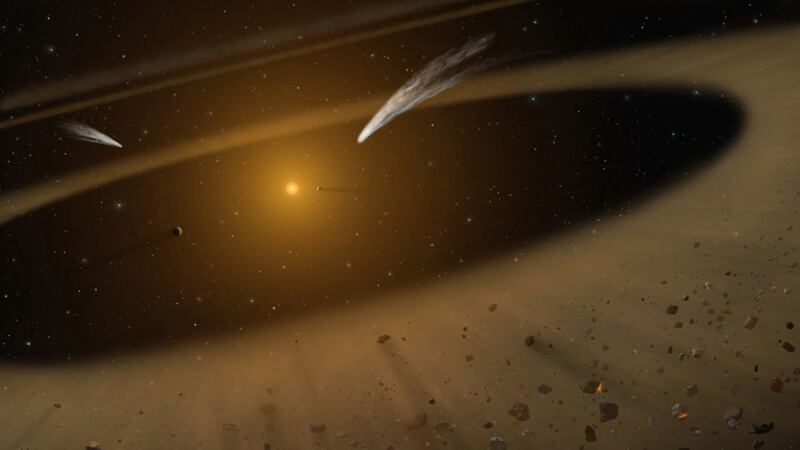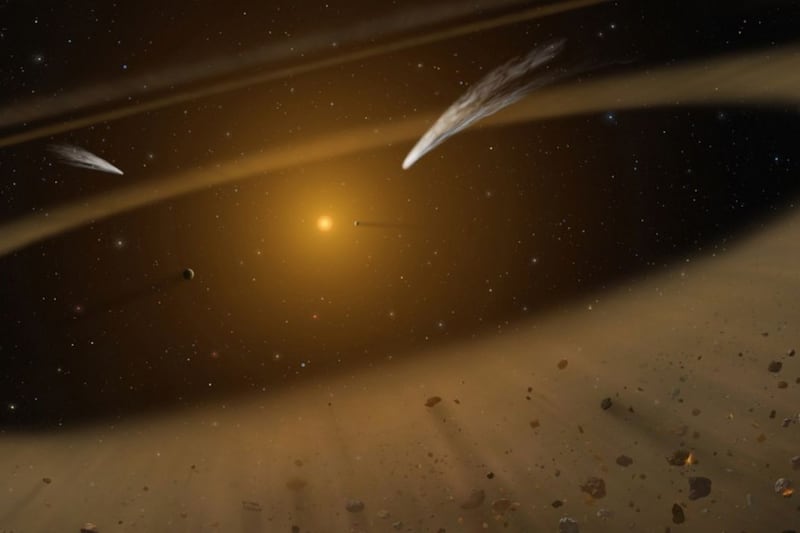Astronomers have found a solar system more than 10 light years away that, they say, is “remarkably similar” to ours.
Located in the southern hemisphere of the constellation Eridanus, the star – which is called Epsilon Eridani (eps Eri for short) – is one-fifth the age of the Sun but bears a close resemblance to it and investigations have revealed its surrounding planetary system has an architecture that is very similar to our solar system.
The researchers say this discovery could give us a better understanding of how our own solar system was formed.
“It really is impressive how eps Eri, a much younger version of our solar system, is put together like ours,” said Kate Su of the University of Arizona, who was involved in the study.
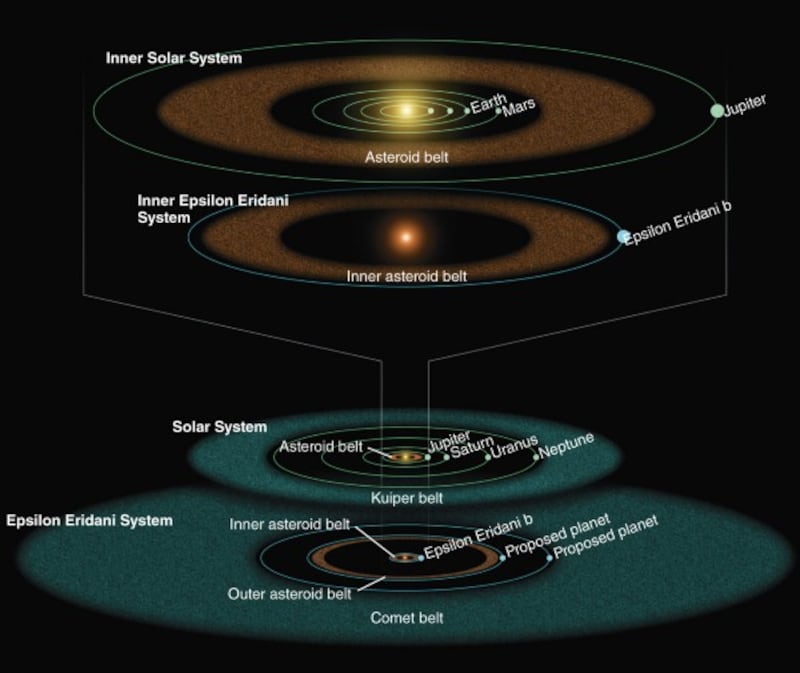
Su, along with other astronomers, looked at images and data from the Stratospheric Observatory for Infrared Astronomy (Sofia), which is Nasa’s flying observatory, and Nasa’s Spitzer Space Telescope.
Using computer modelling, they replicated the complex debris disc structure of eps Eri, separating the faint emission of the disc from the much brighter light coming from the star.
They found that the star is surrounded by two disc structures with a gap that may have been created by planets.
A debris disc is made up of leftover material consisting of gas, dust and small rocky and icy bodies still orbiting a star after planetary construction has been completed.
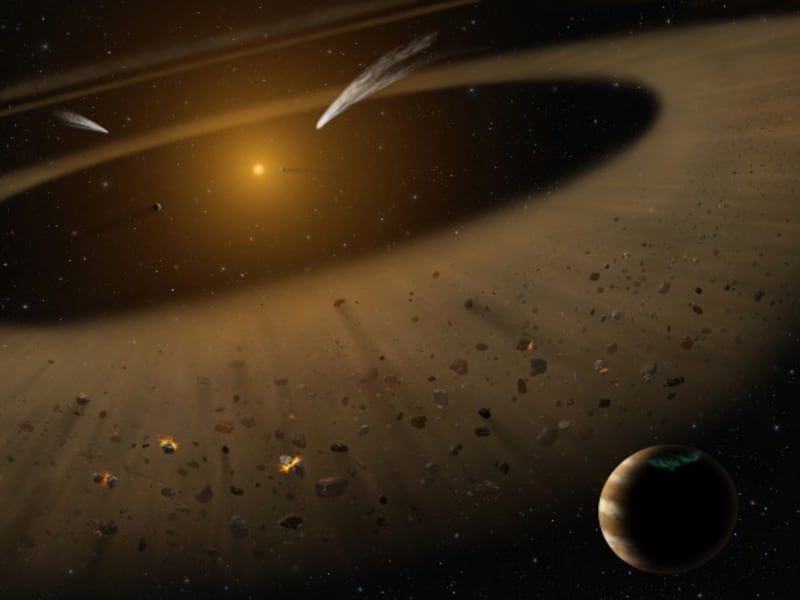
Iowa State University’s Massimo Marengo, one of the authors of the study, said: “We can now say with great confidence that there is a separation between the star’s inner and outer belts.
“There is a gap most likely created by planets. We haven’t detected them yet, but I would be surprised if they are not there.
“Seeing them will require using the next-generation instrumentation, perhaps Nasa’s 6.5-metre James Webb Space Telescope scheduled for launch in October 2018.”
Su added: “A planetary mass object is needed to stop the sheet of dust from the outer zone, similar to Neptune’s role in our solar system.”
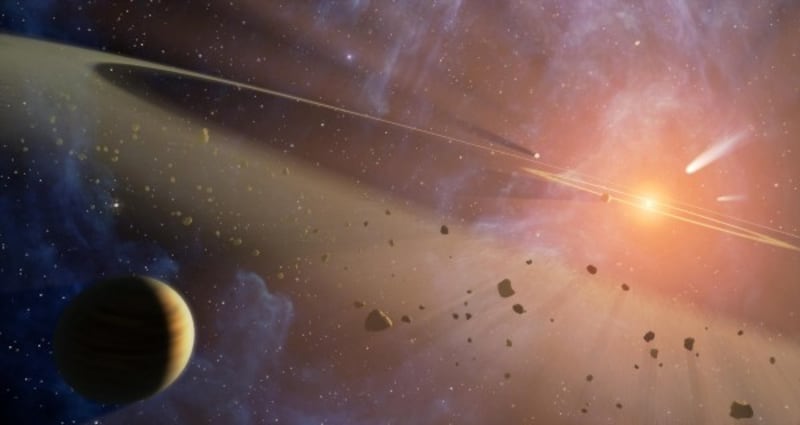
The astronomers also hope that observing this solar system could give them an idea of what ancient Earth may have been like.
“The prize at the end of this road is to understand the true structure of Epsilon Eridani’s out-of-this-world disk, and its interactions with the cohort of planets likely inhabiting its system,” Marengo wrote in a blog post.
“Sofia, by its unique ability of capturing infrared light in the dry stratospheric sky, is the closest we have to a time machine, revealing a glimpse of Earth’s ancient past by observing the present of a nearby young sun.”
The study is published in the Astronomical Journal.
